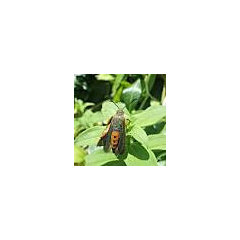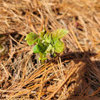Insecticide for svb?
frdnicholas
last year
Featured Answer
Sort by:Oldest
Comments (13)
beesneeds
last yeardaninthedirt (USDA 9a, HZ9, CentTX, Sunset z30, Cfa)
last yearlast modified: last yearRelated Discussions
SVB resistant squash?
Comments (13)I'm in my second season growing out Dolma Kabak (Light green Zuchinni from Turkey). This is a c. pepo summer squash but it vines out quite a bit and roots all along the vine. I had a hill of this squash produce all last summer, and even though the borers hit its base, it never slowed down. We had summer squash till frost. I do believe it is less attractive to borers than some others, just like Scarchuks Supreme, which is an acorn squash (also c. pepo). This year I ventured to plant a hill of Hubbard squash and it was promptly destroyed by borers, as soon as it began to flower. But I have a Dolma Kabak summer squash, only about 30' away which has yet to be harmed. I know this is anecdotal. But I strongly suspect this squash has something about it which makes it more resistant than most. Regina, the Arikara, if I recall is only resistant because it produces so quickly. It's a c. maxima, like a Hubbard. I have no experience with it. But I would be very cautious about trusting it to making a dependable crop in SVB territory. Farmer Dill, tell us a bit more about Cucuzzi. Does it really taste like a summer squash? I bet it makes a large vine. It does sound like a good option. I grow a c. moschata called Warsaw Buff Pie Pumpkin, which is quite resistant to borers. It's very similar to a butternut. But frankly I'm not fond of butternuts as summer squash. Some people are fine with them. But for me, there's a different texture which I don't care for. That's the only reason I personally steer away from Trombocino. George Tahlequah, OK...See MoreSVB Attack, Will Have to Operate
Comments (17)This afternoon, with no warning at all the very back squash plant died of I think bacteria wilt. I don't count on any of these plants living for long. All the leaves dropped, every single one of them, it looks healthy above, that was a day ago. It's the one at the middle far left. I pulled the root, it was dark green and becoming yellowish at the root. There was no squash vine borer in the plant and the eggs have been removed for 2 days now. I think maybe my potion killed them, or maybe it was bacteria wilt. It's been 2 days and none of the rest are dying, but there some leaves that look bad, some are nice, new, healthy, and green, even the old ones look healthy. This link shows 150 different squash/pumpkin types, can anyone vouch to their resistance to squash bugs and borers. I have to say right now the patty pans, although still small, are doing fine, and the sweet dumpling had only one or two eggs on them, none at all today saying maybe they are resistant? The cucumbers didn't have any on them either. The sweet dumpling plant had lots of flowers, so it should be under the same attack as the other. I see my method of removing eggs is not working, I didn't go as far as to put the eggs in soapy water afterwards, so I don't expect to have rid them of my plants. They will just drop down under the leaves and hatch there. Oh, well. My local hardware store does not sell any of the organic bug control, no pyrethrin, no potassium salts with fatty acids, no neem oil, and no nematodes or BT. I couldn't get to the farmer's coop today, but tomorrow I will go. I'm thinking a winter crop of chrysanthemums? Can they grow in the winter? What varieties can you think of on the link below that have similar tastes to crooked neck, which I liked better. I didn't like the crooked neck I got this year, not as tasty or resilient and really was supposed to be long neck yellow squash. I'll plant a fall crop of the ones I have and put them under hoops or plastic for cold weather. Here is a link that might be useful: Squash/Pumpkin Varieties...See MoreTriple threat: SVB, cuke beetles, and squash bugs
Comments (6)Here is a method to control cucumber beetles that anney, from this forum, published in a prior posting. I am copying and pasting rather than have you read a very long thread. At the bottom is info and a link about SVBs: Posted by anney Georgia 8 (My Page) on Wed, Jun 24, 09 at 5:45 For those who might be interested, the rationale for this insecticide is to combine two ingredients, a cucumber beetle lure and a cucumber beetle poison. The lure must not attract any other insects to the poison. The quickest insecticide using these principles to dispatch cuke beetles is to combine clove oil and dental disclosing tablets (made with red dye #28 -- no other red dye works) with water and set it around your plants. Dissolve one tablet containing the red dye in a half-cup of water. Then mix 3 tablespoons of the dye mixture and one teaspoon of the clove oil and put it in a shallow non-plastic container like a jar lid or even a small metal catfood can so the cucumber beetles can feed on it. Set it in your garden or hang it about 24" high on your trellises. (Clove oil melts plastic so don't use plastic cups.) Save the rest of the dye mixture in the refrigerator and your clove oil separately. Replenish after rain or when it evaporates. Female cucumber beetles are attracted by the volatiles in the clove oil and will flock to eat it -- but no other insects are attracted to it. The red dye that they ingest along with the clove oil is phototoxic, meaning that it causes a reaction when the insect is in sunlight, killing them in as little as five minutes. You can replace the red dye #28 with Sevin if you don't have ready access to the red dye and don't mind going chemical. The Sevin does not go in your garden or on your plants, so you aren't contaminating your garden with it. It stays in its container, and it must eventually be discarded, so that's something to think about. You can also use cucumber "boats" as your container. Just slice a cucumber the long way, scoop out some of the seeds, and soak them in the clove oil and dye mixture for several hours so they absorb them. Then set them around your garden. (They'll disintegrate in place with no harm done to anything.) Cucumber beetles will decrease in number as the females die. Using this insecticide, I don't see any but one or two stray cuke beetles after a few days. ************************* SVBs As far as SVBs, if you are sure you have them (have you seen an entry hole and frass in the stem?) there are lots of postings here on how to attempt to treat it using Bt injected into the stem after retrieving the SVB larvae from within the stem. Here is a link someone published previously by a forum member which explains how (see "Management"). And there are lots of postings about this if you search 'SVB' here at the bottom of the page. Here is a link that might be useful: SVB info...See MoreI dropped the SVB eggs!
Comments (2)ahhhh! Genius! Thank you! Are the worms known to hatch in the dirt and find their way to the vine or are they too weak and might die?...See Morezeedman Zone 5 Wisconsin
last yearLinda Ann
last yearmxk3 z5b_MI
last yearvgkg Z-7 Va
last yearlast modified: last yeardaninthedirt (USDA 9a, HZ9, CentTX, Sunset z30, Cfa)
last yearlast modified: last yearklem1
last yearklem1
last year





daninthedirt (USDA 9a, HZ9, CentTX, Sunset z30, Cfa)